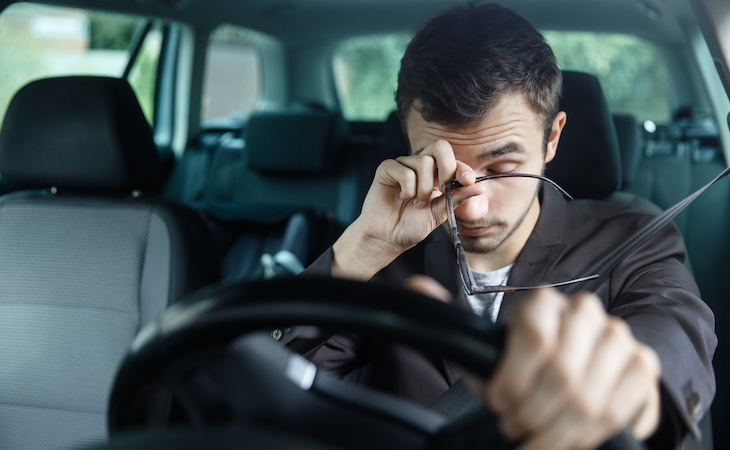Sleepwalking can be a scary, strange issue to deal with. This parasomnia (or abnormal sleep behavior) is most common among kids. Approximately 29% of children experience sleepwalking. But they typically grow out of it by their teen years, with just 4% of adults walking in their sleep.
Sleepwalking can sometimes lead to injuries or other dangerous situations. And while some causes of sleepwalking are nothing to worry about (like a disruption in sleep schedule), more serious medical conditions can sometimes trigger sleepwalking.
Learn what causes sleepwalking, why people sleepwalk, and how to prevent sleepwalking so you or your child doesn’t get hurt.
What is sleepwalking?
Sleepwalking (also called somnambulism) is an abnormal sleep behavior where someone gets up and walks around while asleep. This usually occurs during non-REM sleep, or deep sleep, and happens most often early in the night. It’s considered a disorder of arousal because you’re in between wakefulness and sleep.
Someone who’s sleepwalking will likely:
- Have open eyes but a glazed or empty expression
- Be difficult to wake up
- Exhibit clumsy behavior
- Not respond to you or say things that don’t make sense
- Be confused once they do wake up
- Not remember the episode
They might exhibit behaviors such as getting dressed or moving furniture. Most episodes of sleepwalking are over within 10 minutes. Sometimes, sleep talking or sleep terrors accompany sleepwalking.
While sleepwalking itself isn’t a major concern, it impacts your wakefulness in the daytime and can occasionally cause injuries or dangerous situations. A person who’s sleepwalking might stumble over an object on the floor, cut themselves on something sharp, or even open the door and leave their house. Sleepwalking can also simply be distracting to other people who live in the home and are trying to get sleep.
What causes sleepwalking?
Medical conditions such as anxiety, sleep apnea, or infection can trigger sleepwalking. In other cases, though, the cause of sleepwalking is something simple, such as going to bed with a full bladder.
Common causes of sleepwalking include:
- Sleep deprivation
- Stress or anxiety
- Fever
- Sleep schedule disruptions
- Sleep-disordered breathing (such as sleep apnea)
- Taking certain medications (including hypnotics, sedatives, and certain psychiatric medications)
- Substance use (drugs and alcohol)
- Restless legs syndrome
- Gastroesophageal reflux disease (GERD)
- Brain injury
- Genetics (sleepwalking is often hereditary)
- Epilepsy or seizures
How to stop sleepwalking
Sleepwalking can be normal and often goes away with age. However, it’s still a good idea to bring it up with your or your child’s doctor—especially if it causes daytime sleepiness, continues into their teen or adult years, or happens more than once or twice a week.
If you’re looking for tips on how to stop sleepwalking, focusing on overall sleep hygiene can help. Try exercising before bed and limiting screen time; do your best to manage stress levels too. Your doctor can offer advice and help create an age-appropriate treatment plan. Medications are sometimes helpful.
To help a sleepwalker, be calm and gentle. Guide them back to bed. You may want to move clutter off of the floor, put safety gates at the top of the stairs, and not let your child sleep on the top of a bunk bed.
FAQs
What mental illness is associated with sleepwalking?
Studies have indicated that anxiety disorders, obsessive-compulsive disorder (OCD), and depression can be associated with sleepwalking. People who with alcohol or substance use disorders and people who take certain psychiatric medications are also often more likely to sleepwalk.
What does it mean when you sleepwalk?
Sleepwalking can have different causes for everybody. You might be experiencing sleepwalking because of sleep deprivation or disruption, stress or anxiety, or sometimes because of a medical condition such as epilepsy, sleep apnea, or restless legs syndrome.
Why should you never wake a sleepwalker?
If you really need to, it’s OK to wake up someone who’s sleepwalking—just make sure you’re gentle and calm. Don’t shout at the person, shake them, or act otherwise aggressively. Staying calm will help prevent any fear or anger they might feel from waking up.
How do I stop myself from sleepwalking?
Sleepwalking can’t always be prevented. However, improving your sleep hygiene, managing stress, and speaking with your doctor for further treatment can help control walking in your sleep.
In addition to sleepwalking, there are a few other sleep disorders that are common in children. Check out our guide to learn more about childhood sleep disorders and how to treat them.




